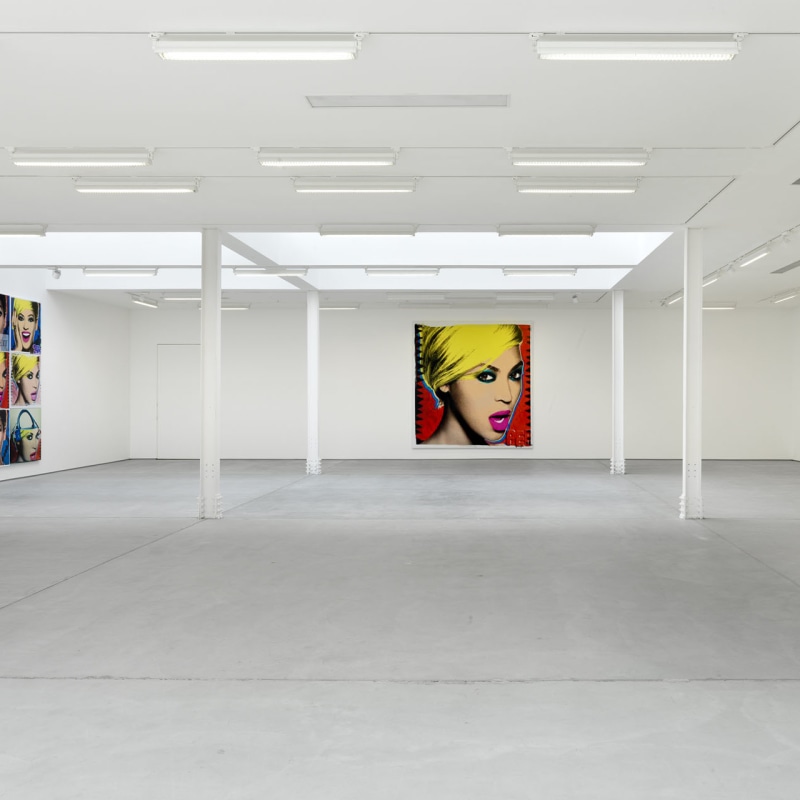Jonathan Horowitz’s spring 2015 exhibition at Sadie Coles HQ, 304.8cm Paintings, features new series of paintings traversing themes of art and technology – from the expressive mark, to the printed page, to the digital screen. Uniform in scale – each canvas measures an identical 304.8 cm (ten feet) in height – the works address the concept of translation and its inherent imperfections, using art-historical and pop-cultural icons as ciphers undergoing refraction and reformulation.
In two new series, Horowitz extends his previous appropria-tion of the art of Roy Lichtenstein, whose paintings of mirrors (themselves translated from comic strips) depict light bouncing off glass in slanting bands of colour and chains of Ben-Day dots. Four six-panel canvases reproduce Lichtenstein’s broken diagonals on a giant scale, with each panel painted freehand by a different assistant, dispensing with the regulatory mechanisms of rulers and stencils. At first glance, the paintings appear as Lichtenstein facsimiles. Up close, they become painstakingly laboured self-portraits of the different painters who made them. The slick aesthetic of Pop Art is thereby reconstrued in a hand rendered and composite form, producing a wavering tension between duplication and distortion, anonymity and expression.
A related work focuses on the motif of the Ben-Day dot, which has been enlarged and distanced from pictorial context. In Horowitz’s work, the dot equivocates in status – caught between its original pictographic function (as a rudimentary transmitter of meaning) and that of an abstract Minimalist form. Trying to approximate a diameter of eight inches, a hundred different people have painted freehand a hundred dots. Arrayed in a grid, the dots vary in size and regularity, at once echoing and subverting the regimented abstraction of much Minimalist and Constructivist painting. En masse, they enact a push-pull effect on the eye, their suspended and imprecise forms simultaneously hinting at and resisting the illusion of depth.
Seriality as a motif of Pop art is invoked in a new series of portraits of Beyoncé, arranged in the modular format of Andy Warhol. Horowitz has lifted the images from a Pepsi advertisement which itself pastiches the overlaid tints of Warhol’s Marilyn silkscreens. Downloaded from different websites, the combined portraits demonstrate a wobble or discrepancy in resolution and skin tone, holding up a figurative mirror image to the dot paintings. The oft-fetishized imperfection of Warhol’s screening process is here translated to a digital realm, the printing being uniform, the posting of images where mutation occurs. As in previous works, Horowitz looks at a celebrity whose identity is itself ‘in translation’ – a fluid construct moulded for and mediated through the popular imagination.
In one large portrait of the pop icon, a low-resolution file is downloaded from the Internet and blown up to a 304.8 cm /10 ft square. Owing to the degradedness of the image file, she hovers at an impenetrable remove, evanescing into a sea of inkjet dots analogous to Lichtenstein’s Ben-Day dots. As much like Warhol’s Mao as Marilyn, she is the corporate face of a multi-cultural generation, a universal blank slate, downloaded and reposted ad infinitum by her millions of fans
For further information please contact the gallery at +44 (0)20 7493 8611 or press@sadiecoles.com
